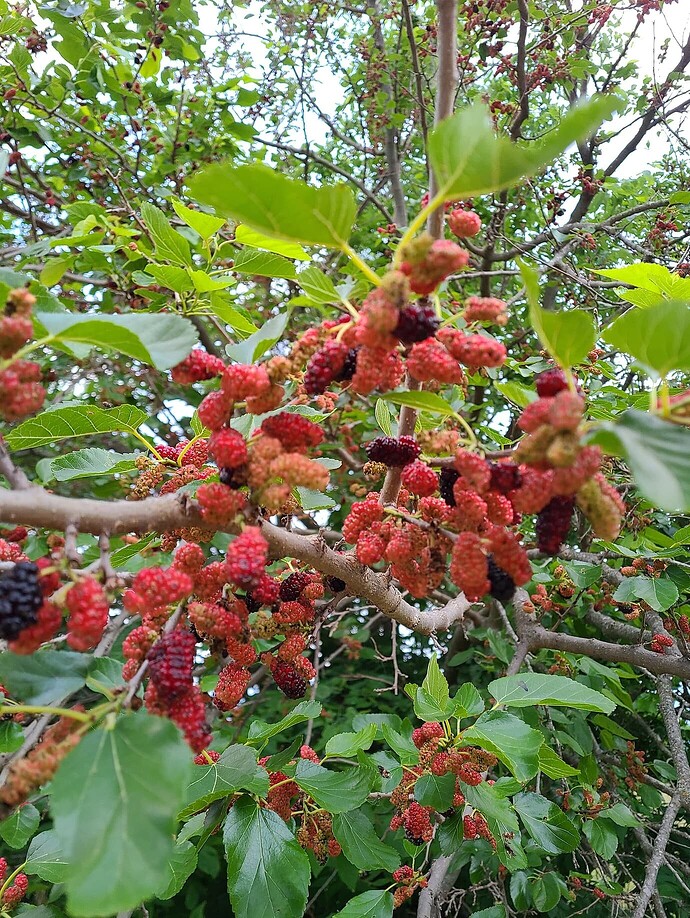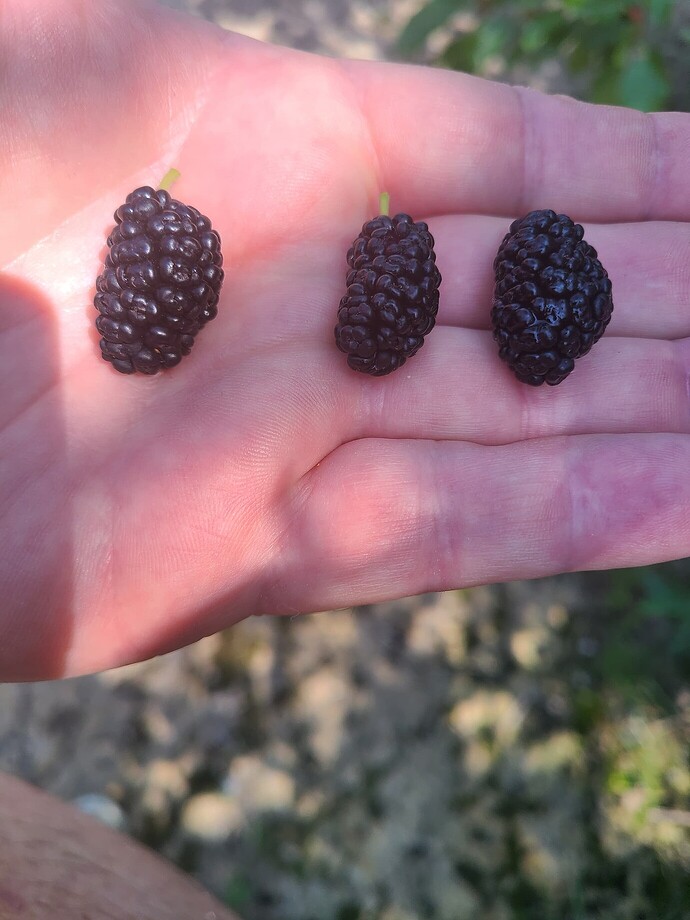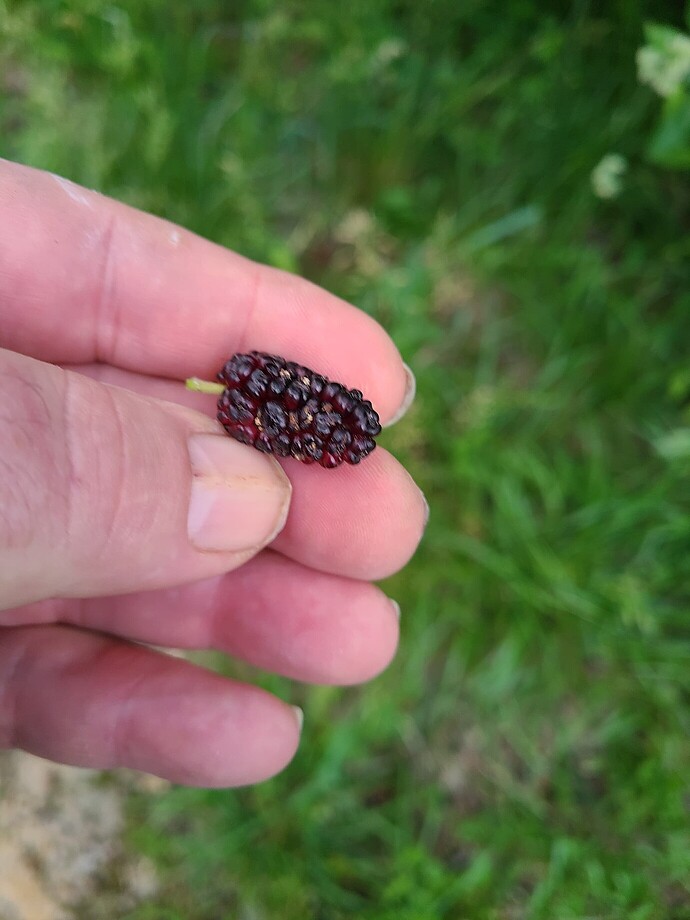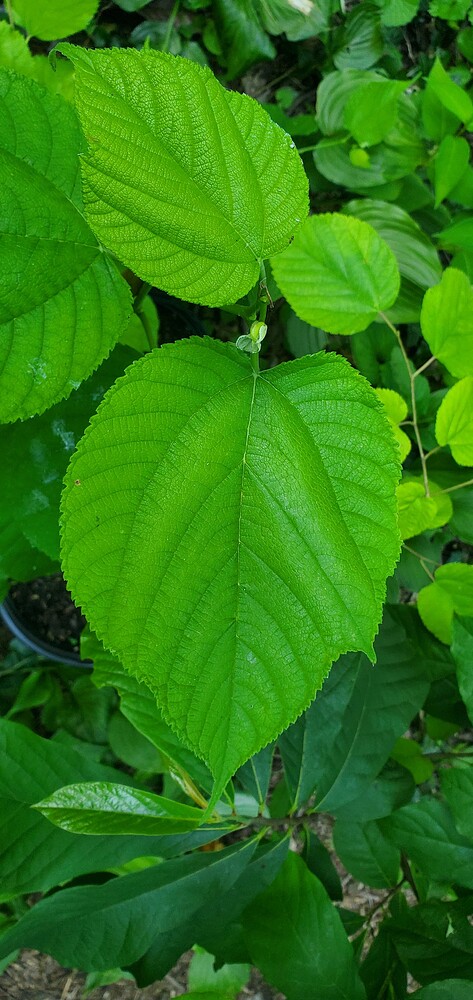@Fusion_power
I did not intend to imply that the only remaining M. nigra are in repositories.
Therefore, it seems to me that no one can know if Rubra is extinct or widely thriving. I’m thinking if mulberry experts label a tree Rubra based on its characteristics but there is no way to accurately test its genetics, the best thing to do is just call it Rubra. Or am I missing something?
Richard, how can you say M. rubra is never monoecious? I want to see the reference. Rubra and alba are as different as night and day to the trained eye, and i’m telling you that the Daugherty selections I received from Lucky check out as the real deal rubra. And one of them is monoecious.
Then you follow your argument saying that genetic testing cannot determine species in the case of rubra. So what does then? If rubra can’t be determined by genetic testing all we have to go on is morphology. And in this case, Daugherty #2 exhibits all the traits of M. rubra and none of the M. alba. Daugherty #2 is monoecious. Therefore, rubra can be monoecious.
CHAT begs to differ with Richard.
Are there areas in the U.S. where Morus Rubra is thriving, like in Tennessee?
ChatGPT said:
Yes—there are definitely areas in the U.S. where Morus rubra is still thriving, and Tennessee is one of them.
 Morus rubra in Tennessee and the Central/Southeastern U.S.
Morus rubra in Tennessee and the Central/Southeastern U.S.
- Tennessee lies in the heart of M. rubra’s native range and supports healthy, widespread populations.
- It grows naturally in rich bottomlands, moist woods, and along streams, which are still common in many rural parts of Tennessee.
- According to the USDA PLANTS Database and regional floras, M. rubra is considered common and not threatened in Tennessee, Kentucky, the Carolinas, Arkansas, Missouri, and other parts of the central and southeastern U.S. (USDA PLANTS Profile – Morus rubra).
My thoughts are just to keep samples of each in 10 gallon pots, pruned small to fit in a greenhouse / hoophouse. Then keep the structure covered during pollen shed / carry the pots indoors. It’s not 100% foolproof, but i would then plan to grub out the hybrid seedlings grown from such pollinations the following year.
It sounds like you have a lot of rubra material. I’d love to trade with you next season.
There are a lot of rubra in eastern Kentucky. Some places I’ve been I can’t even recall seeing any alba.
Everyone has brought up some great points here about mulberries. I think none of us knew as much coming into this conversation. I thought m. Nigra was a natural dwarf and typically everbearing. Clearly i will grow it but i realize not everything i believed was accurate. My plans are changing but i still have a plan. Hopefully some zone 5 and colder people want to try clarks mulberry. Im going to continue working on developing hybrid vigor and larger fruit.
No, I said that there is no viable genetic test to verify plant species.
At best, we can coarsely determine what a specimen is not. Having determined that a specimen is not M. alba does not imply that it is M. rubra.
I am not sure if it still exists, yet there was at least once a mulberry tree in Vermont that had survived many nights of 30 something degrees below zero, possibly 40 degrees below zero with windchill, a few times.
Your argument appears to be “if it quacks like a duck & walks like a duck & looks like a duck, then it definitely is NOT a duck”…
Have you been to the South-East to see any of these supposed “not-rubra” trees? What alba subspecies or variant has any of the typical rubra traits? Certainly not the ones the English brought over, of which we still have living specimens.
Also, here is a quote concerning Linnaeus changing his original description of M. rubra from strictly dioecious to sometimes monoecious in the 18th century.
“Still, both Morus and Urtica did not fit neatly into Linnaeus’s sexual system, as both plants can be dioecious and monoecious. As a result, Urtica was placed in both Dioecia and Monoecia in Systema Naturae (1735, unpag.). Linnaeus must have realised very soon after that the same was true for Morus : the red mulberry (Morus rubra ), for example, is mostly dioecious, but can be monoecious.”
Nope. It is more along the lines of:
If it doesn’t quack like a duck, and it doesn’t walk like a duck, and it doesn’t look like a duck, then it is probably not a duck; but this does not imply that it is an egret.
How do you know these are “true” M. rubra then???
@carya
I’ll definitely keep you in mind when I’ve got budwood next Spring.
Back to the topic at hand tho @clarkinks, do you have any interest in adding long mulbs/macrouras to your breeding program? Or are you going to stick with only the varieties you can grow unprotected outside?
Also there is the matter of ‘Himalayan FSP’, which hasn’t been trialed outside of zone 8 I believe, but is suppose to consistently stay dormant longer than other jumbo mulbs. If your winters aren’t too bipolar it might be worth testing at your place.
Please read the repository passports.
I’m looking forward to trialing the products from these breeding programs.
This logic is flawed. In this instance the burden of proof is on alba, not rubra, as it is rubra which forms the native or baseline genetic population, with alba being an outside genome entering into the host population via introgression.
Therefore the logic should be about eliminating the possibility of alba and/or alba introgressions, leaving behind a core of rubra features. In other words, the “duck” in this instance is NOT rubra, it’s alba!
If it doesn’t quack like a duck [alba], and it doesn’t walk like a duck [alba], and it doesn’t look like a duck [alba], then it is probably not a duck [alba];
Which of course leaves rubra as the obvious conclusion, on account of ecological context, geographical placement, and morphological features.
Nope.
Nope, because it could also be hybrid.
Further, there is an issue with the person(s) claiming it is unlike M. alba. What is their experience with worldwide specimens?
This is what true rubra looks like. Even a small fraction of introgression will change this morphology in ways detectable in little time.
Richard, the burden of proof is on you. You failed to list any sources as to why rubra cannot be monoecious, and you stubbornly stick to your arguments without backing them up with anything substantial.
I didn’t sign up to teach courses in Logic Theory or Botany.
You are welcome to your own opinions.
Regardless, I look forward to the products of this community breeding project.
For those targeting cold hardiness, has anyone considered using the Russian cultivar M. alba ‘Tatarica’?
That’s a relief!
Moral of the story is try never to speak with certainty before a consultation with AI. So many of the things we assume can be based on misinformation sometimes passed on to us by experts. Also, sometimes passed on by AI if you fail to interrogate it thoroughly and check its sources. Oh yeah, and mostly from assumptions drawn from limited anecdotal observation. Man, I’ve made a lot of doozies by depending on anecdote and “logical” deduction to the point where I make a mission of deflating those kinds of assumptions that are so popular on any forum and vastly complicate the matter of separating fact from fiction on the internet.
![]()
![]()
![]()
I have taught formal set & logic theory at the college level, along with the upper division mathematics and engineering courses that require them.



